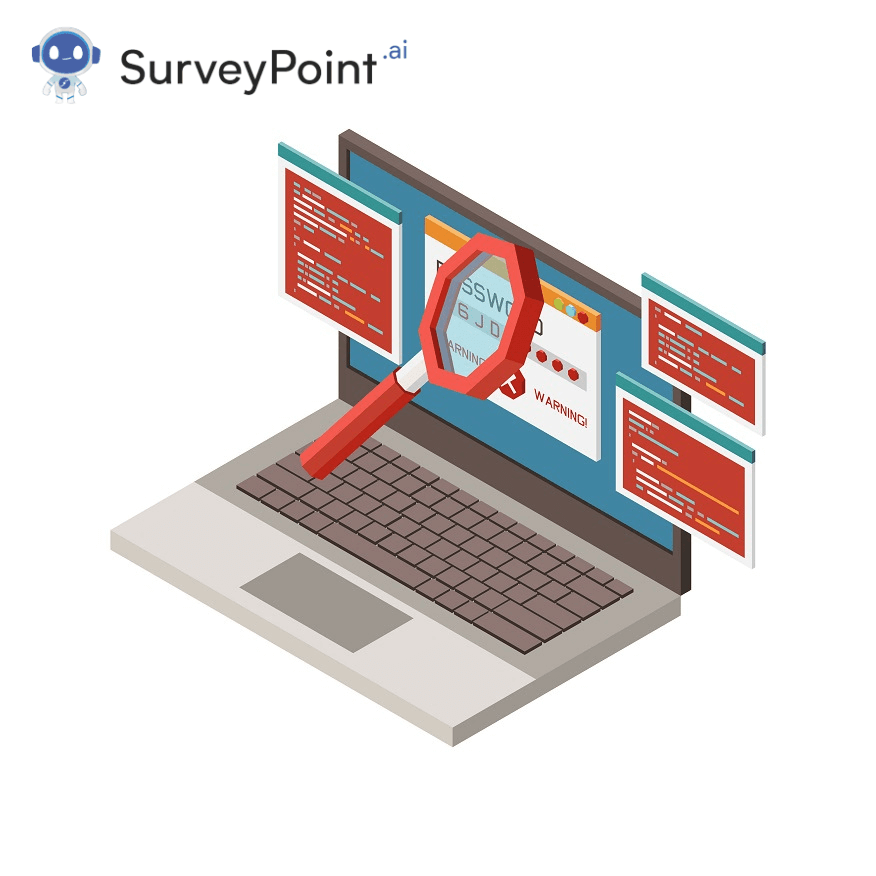
Conducting online surveys can be a great way to gather essential insights and give meaning to your market research. But it’s pretty often that your survey responses get flooded with fraudulent data.
There’s no denying that conducting online surveys on platforms like SurveyPoint can be a great deal. You get to access loads of data in one shot and personally connect with your target audience while tapping into essential industry insights.
Surveys also help with helping you map trends and get an edge over the competition. However, specific preventive steps are essential to prevent respondents from entering fraudulent data.
Here are the three different patterns when it comes to receiving fraud information while surveying:
- Eligible volunteers who enroll in studies more than once in order to gain payment (such as cash or gift cards);
- Qualified participants who register in studies more than twice, typically without bad intent;
- Ineligible people who make up answers once or often (sometimes using bots) to get paid.
What Do You Mean By A Bot?
Bots are online software applications that mimic or replace human behavior. They often carry out repetitive activities considerably more quickly than human users could, and Bots are frequently made to finish surveys in bulk.
How Can This Affect Your Market Research?
Suppose fraudulent responses are not detected before any remuneration is issued. In that case, duplicate and fake responses might not only jeopardize the quality and authenticity of research data but also have an impact on research finances.
For instance, if only 50 participants could be secured with the available funds and two responses were later determined to be fraudulent, the researcher would not only be out of pocket but would also only be able to sign up 48 people. This is especially troubling if research is being funded by organizations struggling to make ends meet.
RELATED: Agile Market Research: A Revolutionary Way To Gain Insight
How To Detect Fraudulent Data In An Online Survey Data?
Here are some ways to help you tap on fraudulent activity in your survey data:
- Screening For Inconsistency: With qualitative research, you may more easily verify that the responses are logical, pertinent, and expressed in the appropriate language. Check for contradictory results when conducting quantitative research. Verify incorrect answers with additional researchers or supervisors.
- Speed Checks: You ought to have a rough sense of how long a person would take to complete your survey. Several programs, including Qualtrics, will display this estimate. When examining the answers, pay particular attention to any completed in noticeably less or significantly more time.
- Search For Weird Email Addresses: Watch out for odd email addresses. Con artists frequently produce lists of email addresses with arbitrary letters and digits preceding “@xxx.com.”
- Connect With The Respondent If Unsure: When you’ve checked with other people but are still unclear about possible fraud, you might send the participant an email to explain the situation and ask for further details, such as where they saw the advertisement, etc.
RELATED: An Effective Research Strategy for Business Uncertainty
How To Prevent Frauds In Your Online Surveys?
Add A CAPTCHA:
This test is intended to establish whether an online user is human and not a robot programmed to complete surveys repeatedly. You’ve certainly encountered CAPTCHA on a number of different websites, but you might not know what it stands for. The phrase “CAPTCHA” denotes a Completely Automated Public Turing Test to Tell Computers and Humans Apart. You can add one of these as a question type on several websites that offer survey creation tools. To keep bots away, add this to the first page of your study.
Restrict Multiple Responses From A Single IP Address:
You can click a box on many surveys to prevent respondents from taking the survey one more time on the same computer.
Add A Back Button:
You can activate a Back Button in the “Survey Options” section, which is helpful for participants to be able to revise their responses after thinking about them. However, this might allow them to take the survey more than once. Consider the advantages and disadvantages of introducing or eliminating a back button.
Change The Sequence Of Questions:
You can set the questions to appear in a random sequence in the majority of survey platforms; this technique can identify bots because it shows a level of human attentiveness. In other cases, depending on your methodology, this might not be achievable.
Make Your Surveys Invite Only:
Make the survey “Invite Only” and ask prospective participants to contact you for a password rather than posting anonymous links on study adverts. This provides an additional degree of security because you can examine the participants’ language, grammar, and email addresses and ask them where they saw the study advertised to look for signs of fraud.
Add A Consent Form:
Make sure your consent form states, “I am aware that I will not be compensated if my responses are suspected to be fraudulent.” This will protect you in case they try to make a compensation claim and could prevent future fraudsters.
Reduce The Survey Compensation:
Reduce the available remuneration to disincentivize fraud. However, this can result in lower survey participation.
Add An Interview Stage:
It’s not always feasible or appropriate to do this. However, incorporating an interview step into the study would dissuade fraudsters from signing up and add another way to spot fake responses.
Summing Up: How We Can Help?
SurveyPoint values your security. Keeping data security in the midst of all operations, that platform allows the surveyor to add CAPTCHA and carry out other ways to prevent fraudulent activities. You can also choose from several pre-made templates to build a survey within seconds.
In addition to this, SurveyPoint can also help you access all features at the same point through a highly interactive dashboard.




